When the Weather Turns Foul, Because it Will!
April 6th, 2024 by team

by B.J. Porter (Contributing Editor)
Years ago, when I was shopping for my first set of foul weather gear after we got our first boat, I asked my wife if she’d like to go try some on too. “Absolutely not,” she said. “If we need foulies, I don’t want to be out there sailing.”
We got a chuckle over that years later, after crossing oceans together in our foulies for days on end. But what she hit on was a fundamental truth. If you’re cruising coastally, you really don’t want to be out there when the weather gets dangerous. But if you get caught out, what actions do you take?
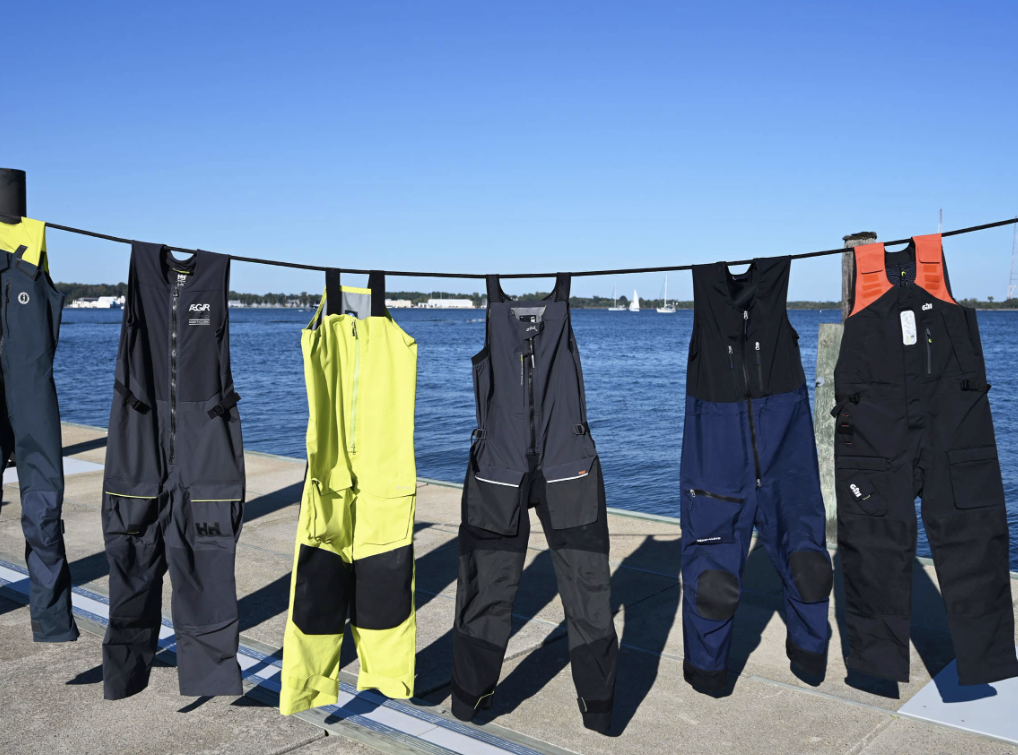
Avoidance – the Best Strategy
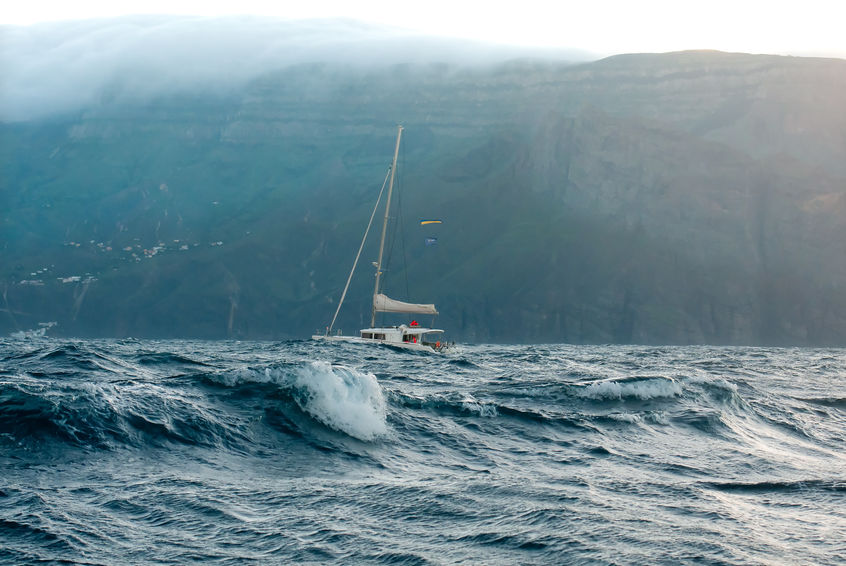
The absolute best way to handle nasty weather is safely tied up or anchored somewhere protected. Just don’t go out in it. With modern weather forecasting, it’s rare to get truly surprised by the horrible weather anymore. But we still get stuck in it, and often it’s a bad choice or a mistake that gets us there.
Always, always monitor the weather
As a boater, there is no excuse for not checking the weather before you leave the dock, even for a three-hour tour. Watch the weather for days before your departure, with eyeslonger term forecasts and systems and how they’re changing. Weather watching is a full topic (or five) for other blogs, but you should follow marine forecasts closely.
Don’t rely solely on the weather reports on TV and radio news, either. They have a different focus, dealing with traffic and precipitation, and rarely get into information about sea states, wave heights and directions, and other key information that goes far beyond comfort and into safety.
Consider what “Inflexible” really means
It’s often said that the most dangerous thing to have on a cruising boat is a schedule, and more often than not, that danger is really about the weather. Schedules can kill if they lead you to poor choices.
People ask us about the worst weather we ever sailed in, and it wasn’t out in the middle of the ocean far from shore. It was on a mostly sunny day coming back from a weekend trip on Block Island, in sight of land, where we sailed into “squalls with killing lightning,” as the Coast Guard put it in their warning.
So how did we end up in 60+ knot white-out conditions in our home waters? A poor decision. My wife had several surgeries scheduled for Monday, which she couldn’t move. So we set sail under sunny skies, despite the forecast, taking our chances that the spotty, localized squalls would miss us. They did not.
With hindsight, which is always 20/20, the wise choice would have been to put my wife on the fast ferry home and leave me on Block Island with the boat. I was perfectly capable of bringing it back myself when the weather passed. However, we fixated on the idea that we had to be home tonight, which kept us from considering alternative ways to solve the problem safely.
It’s OK to stay on another day for weather, even if you have to cancel meetings, miss things or pay for another night or two in the marina. It’s easy to forget just how dangerous nasty weather can be, and sometimes missing a meeting or skipping work and burning a vacation day seems so much immediately worse when we aren’t in the middle of the storm.
Have Fallback Plans
Any time you plan a trip, have fallback options along the way. These are safe ports you can duck into if something unexpected happens. These are just as important for mechanical issues and illness or injury, but also plan them with weather safety in mind.
If you’re on your way out to an island and the skies turn back ahead of you, you may not find a tidy slip at the last minute to hunker down in. But if you have some awareness of the harbors around where you can duck in and anchor or grab a mooring and ride it out, it gives you options besides sailing into the teeth of the storm.
So always know where the safe spots are between you and your destination. Hopefully, you’ll never see them unplanned, but if the weather goes sideways, it’s good to have somewhere to run.
Know Your Storm Plan
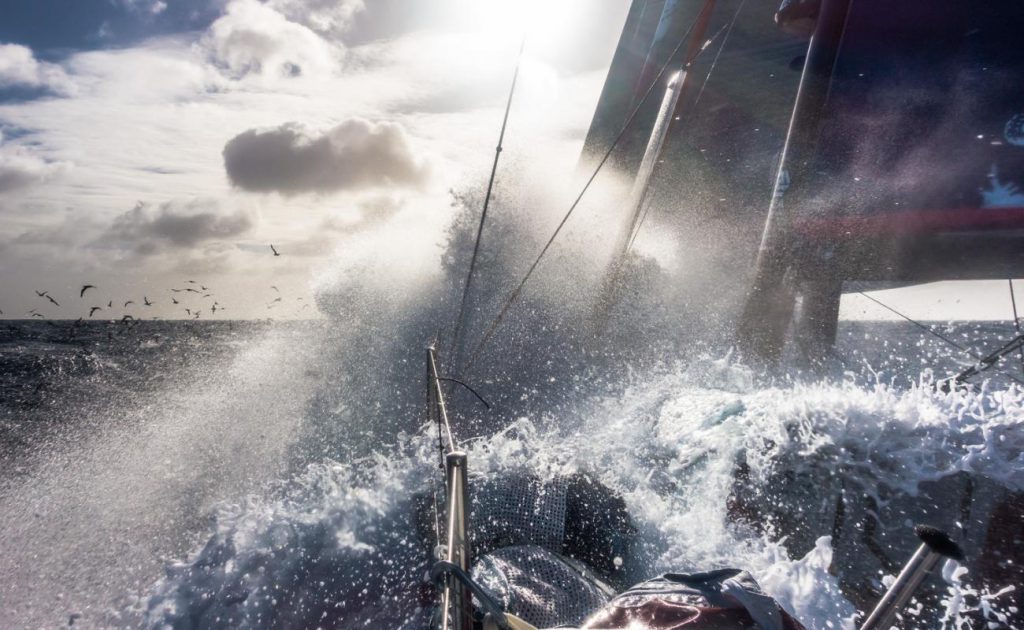
Do you have a plan for sailing in truly terrible weather? There are many approaches to bad weather sailing, and some require additional equipment or preparation. And some require things like plenty of sea room.
If you’ve never thought through exactly how you’d handle your vessel if you in high winds and big seas, the time to figure that out is not when it’s happening. There are many excellent books on heavy weather sailing and boating, and any captain would be smart to look at a couple.
Power or sail, you’ll want to slow your boat down to keep it in control. Offshore sailors often use drogues, warps, sea anchors, or other devices to slow their boats, but coastal and weekend boaters rarely have such specialized equipment.
You also want to avoid taking huge waves on the beam or over the stern. But each type of boat has special techniques, and every boat is a little different in how they respond to and execute them.
Sailing Strategies
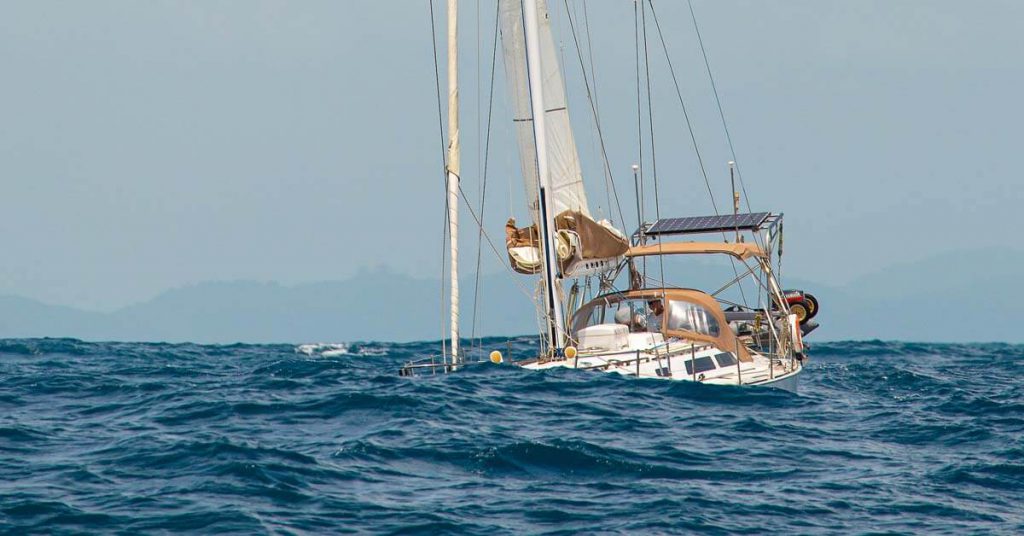
Though the list is far from exhaustive, two strategies all sailors should have at their fingertips are reefing and heaving to. Reefing your sails reduces the sail area, which slows you down and de-powers the sails so you aren’t blown over on your ear. And heaving to is a technique for almost stopping your boat, and putting her in a more sea-kindly motion. It stops some of the more violet motion and lets the crew rest.
Different boats heave to with different sail trim, and a full keeled heavy cruiser will heave to much more easily than a fin or bulb keeled modern speedster. Take the time to learn what your boat needs.
Because the boat isn’t completely stopped, you may need sea room to heave to. You’ll move down and across the wind a little, and it’s not safe close to a lee shore. Pay attention to where your boat is moving and don’t stop navigating, because you don’t stop moving!
Powering Strategies
Slowing down is your first step, then steer the boat about forty-five degrees off the direction of the waves and wind. This can be a challenge in confused seas, but your goal is to keep the bow from slamming straight into and over waves, and keep from getting slapped sideways. The shape of your hull can deflect some of the force away at an angle, and won’t send you plunging down the face of the next wave.
The specific angle and motion from your boat will vary. A trawler is going to take heavy conditions differently than a center cockpit fishing boat. So a lot of it is from feel and experience. While no one wants to experience deadly conditions, if you find yourself powering into some chop, experiment when it’s manageable to find what gives you the most comfort. You’re trying to reduce slamming and side-to-side motion.
Be Prepared for Severe Conditions
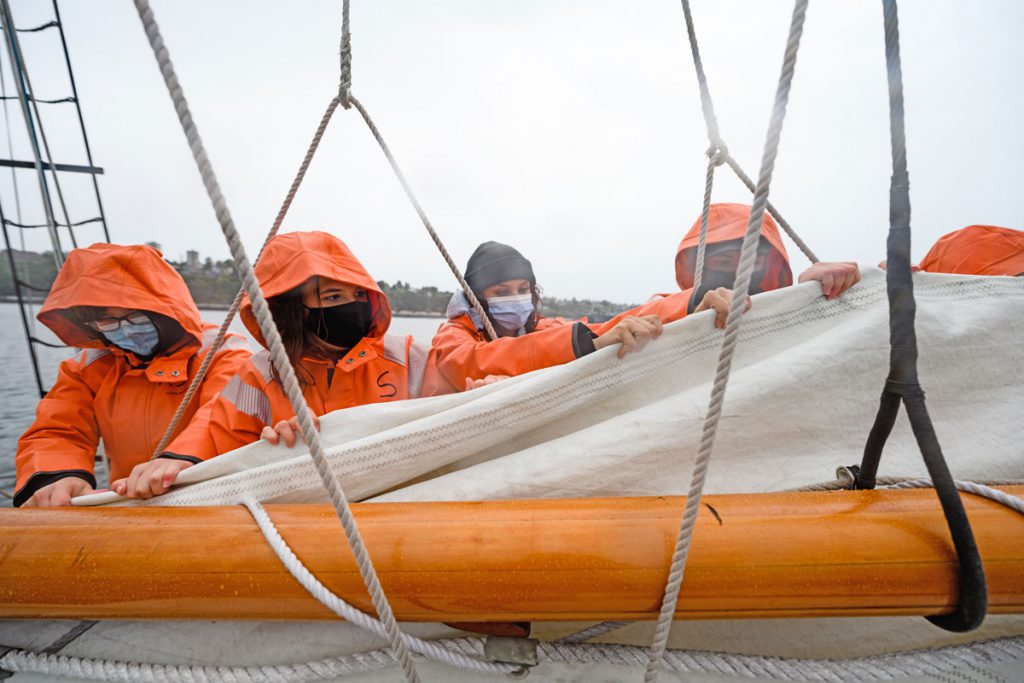
If there’s even a slight chance of bad weather, prepare for the worst if you have to head out. You always hope for the best, but prepare like you’re sailing through the heart of the system. Because you never know. A few things you can do in advance include:
- Top up your fuel. Power or sail, the more empty a fuel tank is, the more it will slosh around and stir up sediment and increase chances of engine problems. Also, fighting tough conditions can use a lot more fuel than you expect, even if you’re moving slowly.
- Make sure your foul weather gear is on board and handy. Put it on when the weather looks like it’s deteriorating, not when you’re soaked to the skin and fighting the conditions.
- If you have special safety gear for storms, make sure it’s on board. This includes harnesses and tethers, storm sails, drogues, etc.
- Have drinking water and easy to eat snacks on hand, in case conditions make it dangerous to cook.
- Keep checking the weather!
Practice Makes…Better
We can’t reasonably practice in severe storm conditions, because it’s unpredictable and dangerous. But you can try some techniques in conditions that are rougher than you prefer but not dangerous. Even drills on a sunny day with light wind are beneficial.
Sailors should know how to heave their boat to, and all boaters who have thoughts of using drogues or other braking devices should practice deploying and re-packing them. Getting caught in more wind and waves than you expected is a perfect practice opportunity!
You will not get to perfect your techniques in actual conditions, but you can do your best to be comfortable with all your options.
Resources
Here are some well-known books on the topic. Unfortunately, there aren’t nearly as many for power boaters.
Adlard Coles’ Heavy Weather Sailing
Heavy Weather Powerboating – Hugo Montgomery-Swan
Heavy Weather Sailing – Martin Thomas, Peter Bruce
Storm Tactics Handbook: Modern Methods of Heaving-to for Survival in Extreme Conditions – Lin & Larry Pardey
- Posted in Blog, Boat Care, Boating Tips, Cruising, Fishing, iNavX, iNavX: How To, Interviews, Navigation, News, Reviews, Sailing, Sailing Tips, Uncategorized
- 4 Comments
- Tags: bad weather, cyclone, foulies, hurricane, sailing storm, storm


April 07, 2024 at 8:09 pm, Mark said:
When you are a skipper with crew , the touchy moment is when to reef, first the main. I always listen to my guts feeling and project how elementa might develop. I don not accept any different remarks opinions „when and if”from my crew very often my close friends
April 10, 2024 at 5:58 pm, B.J. Porter said:
Oir view on reefing always that if we were discussing if it was maybe a good time to reef.. it was time to reef.
Of course we had a furling main and jib and reefing was easy without leaving the cockpit. But we were always conservative
April 08, 2024 at 4:43 pm, Hipolito said:
Sailed in tropical storms sand a cyclone with 55 knots for 19 hours in the coral sea.
April 10, 2024 at 5:59 pm, B.J. Porter said:
How did you manage it? What techniques did you use?